Informed by boxing boots but museum magnificent, learn how Eric Avar and the Black Mamba’s southpaw approach to sneakers put the market on the ropes.
On Mamba Day 2022, the world all wonders the same question: what’s the next Nike Kobe Protro?
Rolling out the performance retro line in wake of the late Kobe Bryant’s 2016 retirement and gaining extreme fanfare in the time since his passing, the Nike Kobe series has been on pause since the estate ended its Swoosh partnership in 2021. Back in March, Vanessa Bryant announced that the Kobe collection would continue with Nike, which has included previous Protro pairs of the Kobe 1, Kobe 4, Kobe 5, and Kobe 6.
Since signing with Nike in 2003, Bryant’s brand has been all about innovation. Working with famed designer Eric Avar on an array of signature shoes, as well as other pinnacle products for Nike Basketball like the Hyperdunk and Huarache 2k4, the two totally changed the category with 2008’s Nike Zoom Kobe 4.
Built below the ankle with insights from soccer cleats, the model altered all ideals about modern basketball footwear while carving a lane for Bryant’s four following signatures.
While linear launches suggest the Nike Kobe 7 System would be next in line, the model that may matter most to fans of Kobe old and young is the Nike Kobe 9.
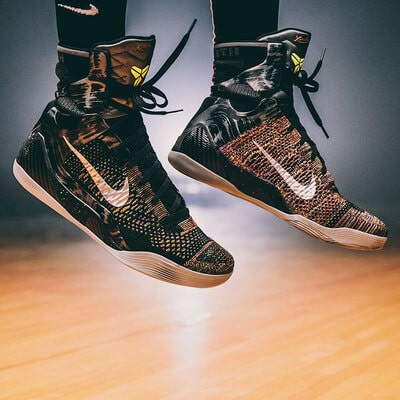
Crafted by Avar and adored by Tinker Hatfield, the high-top Flyknit basketball shoe inverted the height ethos of the counter-culture Kobe 4 while still keeping the Black Mamba low to the ground.
By implementing drop-in Lunarlon cushioning, strong storytelling, and a variety of builds, the Kobe 9 was able to cut through a competitive court space while still appealing to lifestyle wear.
In celebration of Mamba Day, Boardroom breaks down the design details that made the Kobe 9 a critical classic, as well as the industry elements that could play a part in the shoe staying in the vault — or ultimately making a comeback.
Unlikely Origins
The Nike Kobe 9 debuted at retail in Feb. 2014. Typically speaking, a shoe takes 18 months to evolve from ideation to distribution, putting the first meetings around August 2012.
Looking back, that time places Kobe approaching 34 years of age and coming off a postseason in which the youthful Oklahoma City Thunder led by Kevin Durant and Russell Westbrook beat the Los Angeles Lakers 4-1 in the second round of the NBA Playoffs.
With youth on the rise out West and LeBron leading a loaded Miami Heat squad in the East, an aging Bryant needed a new edge.
“I was with [Manny] Pacquiao, watching him train and prepare for a fight,” Bryant told Boardroom’s Nick DePaula at the unveiling of the Kobe 9. “I’m looking down and looking at his boxing moves and saying, ‘Hey, I wonder if there’s something there.'”
While it’s possible that previously seeing his beloved Italy win the World Cup in 2006 contributed to the futbol-inspired styling of 2008’s genre-bending Kobe 4, it’s considered canon that witnessing PacMan prepare for bouts inspired themes of mobility and fight.
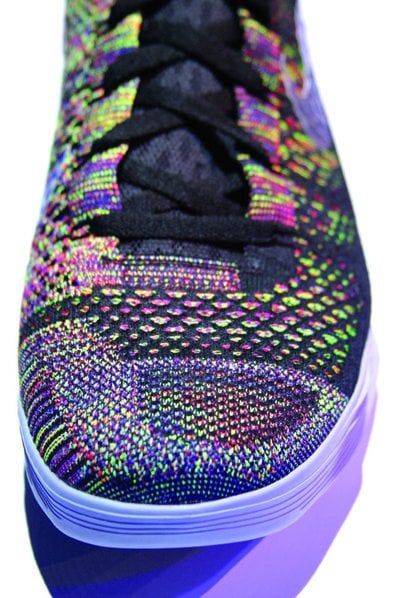
Around the same span that Kobe was breaking from NBA basketball in the summer of 2012, Nike was using the London Olympics as a staging area for their latest innovation: Flyknit.
Debuted on the lightweight Nike Flyknit Racer and Trainer running shoes, the threaded footwear offerings introduced an alternative to leather that was progressive and boundary-pushing.
“Flyknit is, in many respects, game-changing in terms of performance, in terms of design,” then-Nike CEO Mark Parker told DePaula at the Kobe 9 launch. “It’s like you’ve got a high-precision instrument to work with.”
Catching fire in the casual space thanks to an unlikely endorsement from Kanye West, Nike Flyknit became a thing in sneaker culture almost instantly. The innovation was particularly good for business thanks to the increasing cost of leather, while the fabricated upper allowed new ways to secure the foot and showcase color.
Over the course of Bryant’s subsequent 2012-13 campaign, the Black Mamba battled opponents in the low-top Nike Kobe 8. Dressed in engineered mesh and kept low through Lunarlon soles, the shoe was a classic case in reduction by innovating and sharpening the ethos introduced on the Nike Kobe 4.
As the Lakers leaned on Bryant to secure playoff seeding, Kobe infamously tore his Achilles tendon in the 80th game of the season, ending all dreams of a 2013 championship.
Distraught but determined, Bryant put all his energy into rehabilitation. Meanwhile, Avar and Co. put the finishing touches on his ninth signature shoe.
The Rollout
When it was time to take the Nike Kobe 9 to market — a process that Avar later revealed took nearly two and a half years — there was plenty of promise and plenty of problems. Namely, a 35-year-old Kobe was still recovering from his Achilles injury.
How could Nike roll out Avar’s manga opus sneaker with its endorser off-court and his career potentially over?
As usual, the Mamba turned tragedy into triumph and leaned into storytelling.
The months spent finishing the Kobe 9 for production coincided with Bryant’s time under the knife and in intense physical therapy. Within that span, Avar approached his muse with his problem while Kobe drew from his pain.
“I remember meeting with him shortly after his surgery, and he was showing me the picture of his surgery and the stitches,” Avar told George Kiel in 2013. “He had a picture of it on his phone, and we just thought that could be a really cool story if we could just weave that into the back. As Kobe said, it’s part of the journey.”
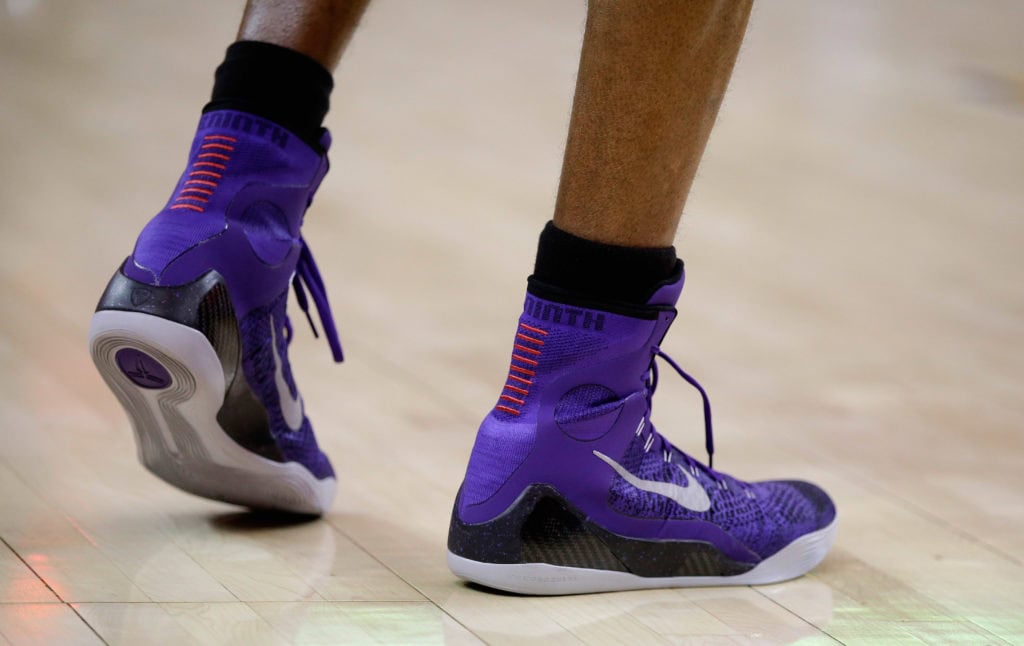
In an 11th-hour update, the team at Nike added literal stitches to the Achilles heel on each colorway, illustrating the tale of Kobe’s comeback practically in real time.
Just like Bryant didn’t waste a single second when working on his game, his approach to tooling his footwear was once again equally focused.
“It’s intense,” Avar continued to Kiel. “Obviously, Kobe is an incredibly intense, very competitive, very detail-oriented individual and player. The way he plays the game is the way he wants to be involved in the design and innovation process. What he expects of himself, he expects of us. It’s definitely intense. I’m a competitive person also, so we just feed off of one another, and I love that. He pushes us, and he’s constantly pushing the design and innovation.”
Over the course of December 2013, mere months after the devastating injury, the Black Mamba returned to play for the Lakers, lacing the Nike Kobe 8 he hurt himself in while also introducing his first formal retro release, the “Prelude” Nike Kobe 1.
Around that same time, two things happened.
First, Kobe introduced his new sneaker to media members with Eric Avar by his side, allowing the “Prelude” Pack to provide a countdown to the shoe’s on-court arrival and retail debut. Second, he fractured the lateral tibial plateau in his left knee that same December, putting him out of action for the rest of the season.
Because of this, the shoe needed a different ambassador to introduce it on the court.
Enter Nick Young.
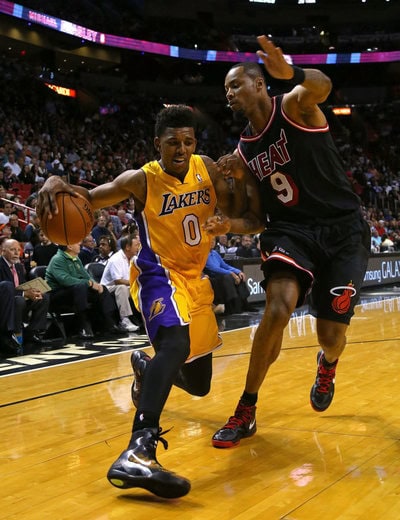
Taking his talents down to South Beach, the likable Laker known simply as “Swaggy P” took the torch for the Kobe 9 with his Mamba mentor sidelined.
Wearing the “Inspiration” style against the Miami Heat, P put up 19 points off the bench as the first active player at the time to debut a Kobe shoe who wasn’t named Kobe.
So, why was it Young that Bryant chose?
“It’s because of my swag,” Young told Kiel with a laugh in 2014. “They know I really love a lot of the Kobes. I feel honored, to tell you the truth. I felt a lot of pressure. Kobe was like, ‘Now you’ve gotta play like me in those.'”
To his credit, Swaggy P lived up to the challenge. Despite coming off the bench for the majority of the season, Young regularly put up point totals in the 20s, including a then-career-high 41 points against the Utah Jazz in the Nike Kobe 9.
Young noted that the Kobe 9 marked his first time playing in high-tops, a powerful point when considering how significantly Kobe had influenced the immediately previous generation to play in low-tops in order to be more like him. When considering the NBA’s talent pool at the time and the many Mamba disciples like Young who grew up watching Bryant as California kids, the Kobe 9 was an entirely new wave.
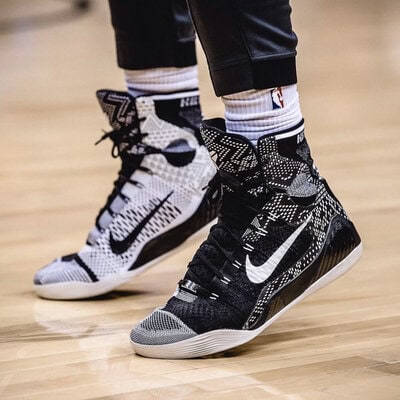
“A lot of people don’t like [the Kobe 9s],” DeMar DeRozan told Kiel in 2014. “I think they’re different, especially going away from the low-top shoes he’s been having. I think they’re dope.”
That season, DeRozan — a Compton native who stayed home for college at USC — made his first All-Star Game while wearing the Nike Kobe 9 early and often in both its proper high-top and spinoff low-top looks that also launched that season.
Amongst hoopers and sneaker elites, the provocative pair was starting to shift culture all over again and get the highest levels of praise.
“[It’s] one of the most iconic, most beautiful shoe designs I’ve ever seen,” Tinker Hatfield told Russ Bengtson and DJ Clark Kent on Complex’s “Quickstrike.”
On the court, heralded reviewers like Kicksology’s Ernest Kim called the Kobe 9 “something special” that those “who sleep on them today will regret it for decades to come.”

“If you consider yourself a sneaker fan and don’t already own a pair of Kobe 9 Elites, what the hell have you been waiting for?!?” Kim continued.
Throughout the calendar year of 2014, the Kobe 9 went on an absolute tear both on the court and in stores. Limited launches released under Nike’s acclaimed HTM moniker — a collective composed of Fragment’s Hiroshi Fujiwara, Tinker Hatfield, and Mark Parker — gave the Kobe 9 all the collector clout it could ever ask for.
Additionally, Jay Z was known to rock the beloved “Beethoven” low-tops casually, adding even more fashion cache to the Kobe franchise.
It all built up to the opening day of the 2014-15 NBA season. Kobe Bryant was finally ready to play in the sneaker he and Eric Avar had started ideating almost three years before.
After a 19-point start to the year, the Black Mamba was quickly back in old form in his new shoes, scoring 31 points in his second game and going off for 44 less than a month into the season.
His influence was omnipresent even at 36 years of age, with countless competitors and teammates gravitating towards the shoe’s high-top takes.
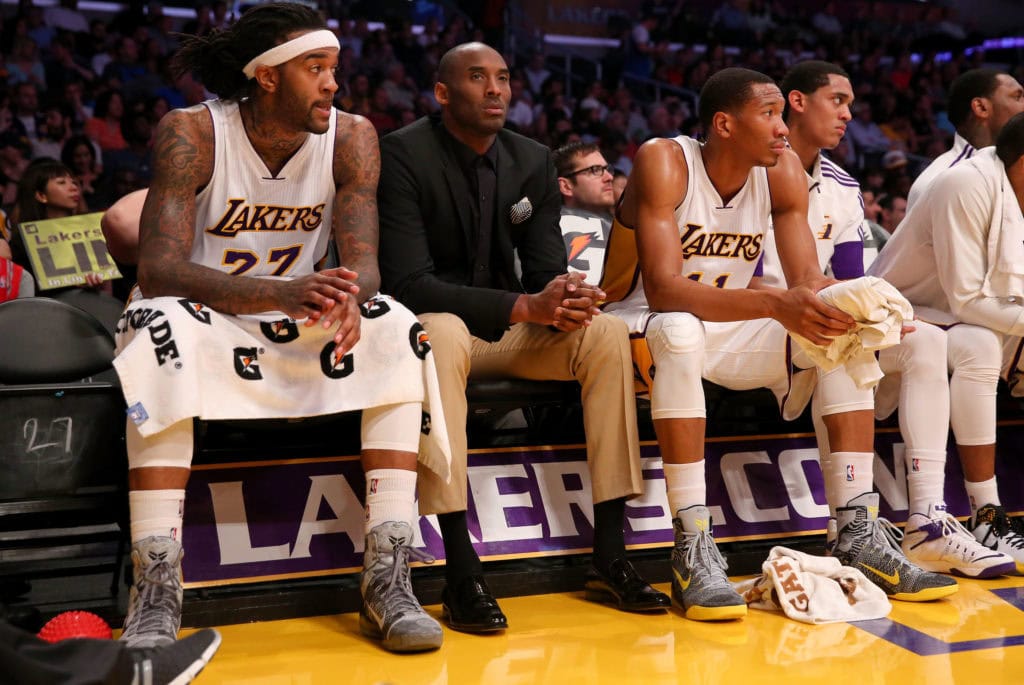
Though injuries continued to plague Kobe during his final two seasons, the Kobe 9 became a breakout hit that inspired a sequel and still stands out today. Across the NBA even in 2022, the above ankle oddity is a sure-fire stunt for the likes of Ja Morant and De’Aaron Fox. Even Bronny James has broken out archival pairs for high school games with Sierra Canyon.
So, with all the playable appeal and palatable hype around the Nike Kobe 9, the question begs: will it ever return?
The Road to Round Two
When Avar and Bryant took the big swing to make a boxing boot-inspired basketball shoe in 2014, luck was not in their corner.
Not only had the market moved to bulky LeBron looks that were considered cool off of the court, but the game was also getting younger and faster by the second, making the idea of selling a $225 high-top endorsed by an injured 35-year-old a gigantic gamble.
Somehow, some way, it all worked.
Beloved by Tinker Hatfield to this day — he’s famously said he wishes he had designed it — the Nike Kobe 9 occupies a space similar to Avar’s other marvels like the Hyperdunk or Foamposite One. Many a sneakerhead could argue that the Kobe 9 has aged better than both in regard to aesthetics and performance, however.
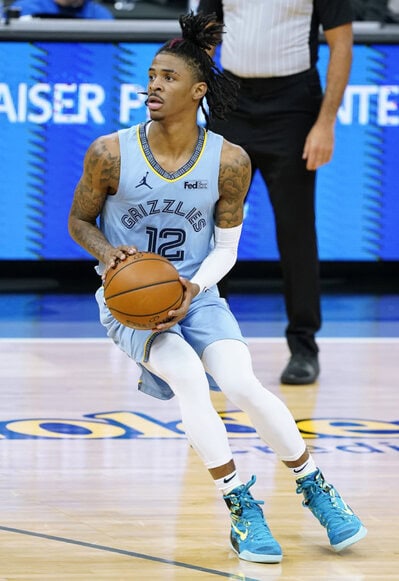
“Eric Avar is a fantastic designer,” Hatfield told Boardroom in June 2022. ” I always felt that Eric had the best job in the design world, which was to work with Kobe Bryant… Kobe was right up there with Michael Jordan, and I think they are the two very best that anybody has ever worked with in the NBA. Kobe was so inquisitive and interested in trying new things; Michael Jordan was the same way. The Nike brand or the Jordan Brand would not be the same without those two people.”
With Bryant back at Nike in regard to his estate, the demand for Protro products tied to Kobe is arguably higher than it was during his playing peak.
However, the Swoosh once again sees a basketball space in which low-tops remain the rage and archival Kobes are often bought more to collect than to actually play in.
That puts the shoe that started at a steep $225 almost a decade ago in a pickle: will consumers cough up that much money for a decided performance shoe, and do the margins make sense when fans already flock to Kobe 4s, 5s, and 6s without a second thought?
Moreover, the basketball brand has almost entirely moved away from Flyknit construction. How does all that factor into the modern marketplace?
In 2022, Flyknit accents everything from sports bras to soccer cleats, living predominately as the upper material of choice for performance running and low-top casual kicks. It’s taken a notable break from the hardwood, with Nike instead making the most of mesh, synthetic leathers, and what it calls “micro-engineered upper material” on new launches tied to Kyrie Irving, LeBron James, and Kevin Durant.
Still, the spirit of Kobe calls for progressive ideas to be pushed, even if they’re now a decade old.
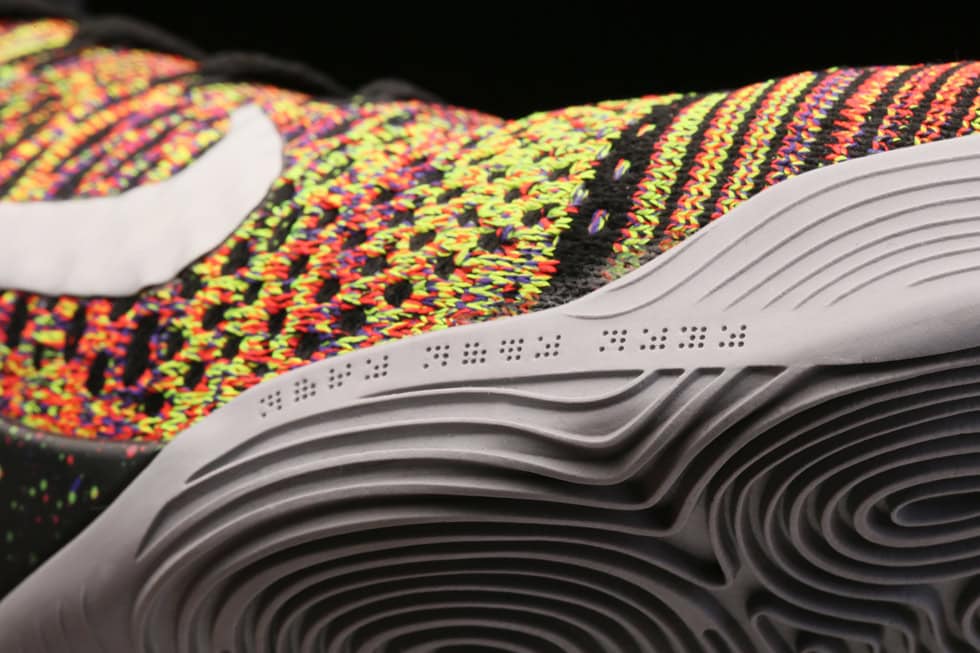
“Some of these projects that are more advanced in performance? There are only a few athletes that will go down that journey with us,” Tinker Hatfield says. “Kobe was one and Michael was another. The process of working with those guys was one of adventure because they were willing to try some things that had never been done before in the interest of trying to pursue the very highest level of performance they could ever attain. They both felt like footwear was a big part of that.”
He may have been taken from us more than two years ago, but the thirst for all things Kobe remains incredibly strong. As Nike takes its time to restrategize the Black Mamba brand and bring out Protro pairs that feed massive demand while still proving chase-worthy, it’s not exactly a lay-up when choosing which styles to bring back and how to do so.
What’s perhaps most interesting is whether or not Nike views the current Kobe audience as being more in the direction of the modern sneaker collector or the classic no-nonsense hooper — much like Bryant himself — who viewed shoes as a weapon for competition.
“We always try and do something that’s going to help my performance on the basketball court,” Bryant told DePaula back at the 2013 Kobe 9 unveiling. “That’s what we always start from.”
Where we go from here remains unclear. But the Mamba’s lasting impact as a symbol of performance, achievement, and dominance is written in bold.